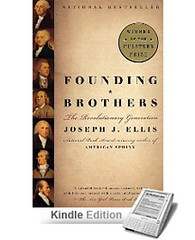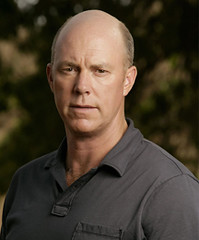Copywriter Brian Beasley recently took exception to the rapid succession of corporate clients recruiting Charlie Sheen to appear in their advertisements. Both Fiat and Direct TV jumped on the measure of eyeballs as they are attracted to one of the top five ways to get media attention.
Beasley's beef is simple enough. Both accounts are elevating the bad boy image, something that is twice as likely to cause a brand blemish than it ever will to drive sales. I dunno. Time will tell whether the aging young gun and his horse have already become too well-worn to ride.
But that doesn't mean there isn't a lesson. And Sheen isn't the only example.
There are an increasing number of people who are crafting all their communication to catch headlines. They usually do it by wrapping themselves up in the cloak of controversy. They do outrageous things. They say outrageous things. They single out other people and call for outrage.
Most of it is designed to get attention, and sometimes it is aimed at getting a rise out of someone else.
That's what all the flap about Rush Limbaugh was, right? That's why some people are taking shots at The Lorax, right? That's why atheist activist groups put up a slavery billboard, right? That's why the Irish are up in arms about Urban Outfitters, right? And that's why there is controversy over the controversy or lack of controversy about singer Lana Del Rey. Controversy is so commonplace, it's cliche and mostly boring.
Worse than that, people who use controversy too often become so associated with controversy that nobody hears what they are saying when they do have something to say. It's just more controversy.
You can't manage your reputation like you can maintain your good character.
Character is the aggregate of features and traits that form the individual nature of some person or thing. It's the real deal. Reputation is only what people see, regardless of what is lurking behind the shadows.
Do you remember the The Dead Zone with Christopher Walken and Martin Sheen? When Johnny Smith, played by Walken, shakes hands with a U.S. Senate candidate Greg Stillson, played by Sheen, he sees that this senator will one day become president and order a nuclear strike. Later, Smith botches an assassination attempt, but Stillson shows his character by taking refuse behind a baby.
Reputation is malleable, which is why people try to manipulate it. Character isn't so malleable, unless you make a conscious effort to change it. When you think about the character of people who create controversy or the people who create controversy by claiming someone else is doing something controversial, you see something entirely different than if you focus merely on reputation.
Charlie Sheen made headlines last year by nurturing his out-of-control self-destructive reputation. Since things have slowed down, he's back to cash in on it again, along with a handful of marketers and media outlets who all want to pretend it's unexpected. It's expected. It's boring. And I can't remember the car.
Beasley's beef is simple enough. Both accounts are elevating the bad boy image, something that is twice as likely to cause a brand blemish than it ever will to drive sales. I dunno. Time will tell whether the aging young gun and his horse have already become too well-worn to ride.
But that doesn't mean there isn't a lesson. And Sheen isn't the only example.
There are an increasing number of people who are crafting all their communication to catch headlines. They usually do it by wrapping themselves up in the cloak of controversy. They do outrageous things. They say outrageous things. They single out other people and call for outrage.
Most of it is designed to get attention, and sometimes it is aimed at getting a rise out of someone else.
That's what all the flap about Rush Limbaugh was, right? That's why some people are taking shots at The Lorax, right? That's why atheist activist groups put up a slavery billboard, right? That's why the Irish are up in arms about Urban Outfitters, right? And that's why there is controversy over the controversy or lack of controversy about singer Lana Del Rey. Controversy is so commonplace, it's cliche and mostly boring.
Worse than that, people who use controversy too often become so associated with controversy that nobody hears what they are saying when they do have something to say. It's just more controversy.
You can't manage your reputation like you can maintain your good character.
Character is the aggregate of features and traits that form the individual nature of some person or thing. It's the real deal. Reputation is only what people see, regardless of what is lurking behind the shadows.
Do you remember the The Dead Zone with Christopher Walken and Martin Sheen? When Johnny Smith, played by Walken, shakes hands with a U.S. Senate candidate Greg Stillson, played by Sheen, he sees that this senator will one day become president and order a nuclear strike. Later, Smith botches an assassination attempt, but Stillson shows his character by taking refuse behind a baby.
Reputation is malleable, which is why people try to manipulate it. Character isn't so malleable, unless you make a conscious effort to change it. When you think about the character of people who create controversy or the people who create controversy by claiming someone else is doing something controversial, you see something entirely different than if you focus merely on reputation.
Charlie Sheen made headlines last year by nurturing his out-of-control self-destructive reputation. Since things have slowed down, he's back to cash in on it again, along with a handful of marketers and media outlets who all want to pretend it's unexpected. It's expected. It's boring. And I can't remember the car.



































